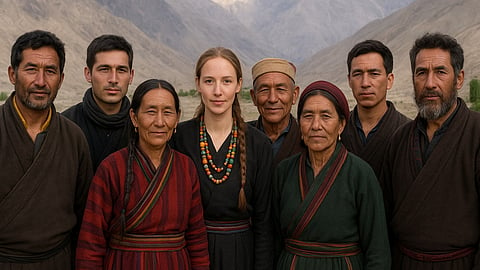High up in a secluded valley in Ladakh lives the Brokpa people, known for fair skin, striking eyes, and tall frames—traits that fuel tales of Aryan roots. Some legends claim they descend from Alexander the Great’s troops or are “pure-bred” Aryans. Whether true or not, these stories have become part of their identity.
The Brokpa themselves have long practiced strict rules about marriage and heritage to preserve community purity. Their culture is matriarchal, with women treated with substantial respect; they eat mostly plant-based foods, avoid external influence, and maintain traditions passed through song, ritual, and strong social norms.
But pressures are growing—tourism, outside expectations, and environmental changes are shifting diets, dialects, and daily life. Through all this, their ancestry narratives—Aryan or otherwise—play a big role in how they see themselves and how others see them. 2


